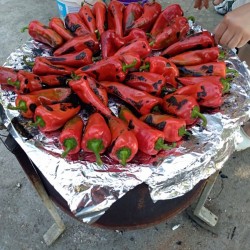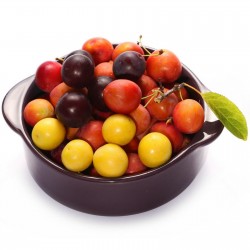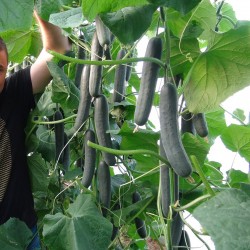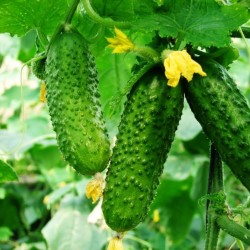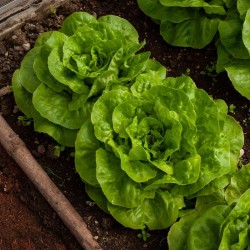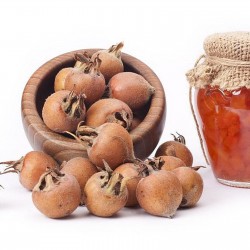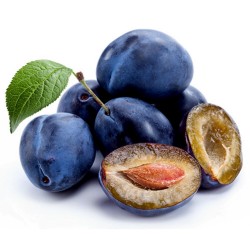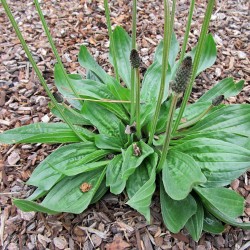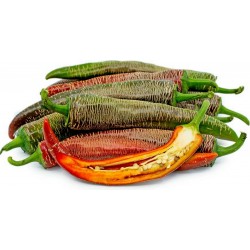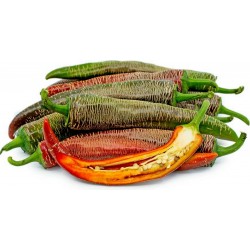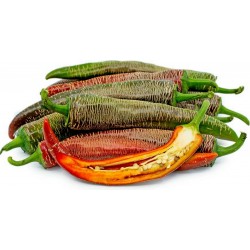
Разнообразие из Сербии
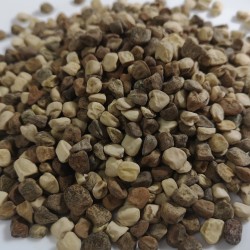
Насіння Барвисті горо́шок...
Ціна
2,15 €
SKU: VE 47 S (6.5g)
Seeds Gallery Com,
5/
5
<!DOCTYPE html>
<html>
<head>
<meta http-equiv="Content-Type" content="text/html; charset=UTF-8" />
</head>
<body>
<h2><strong>Насіння Барвисті горо́шок сійний (Lathyrus sativus)</strong></h2>
<h2><span style="color: #ff0000;"><strong>Ціна за упаковку з 6,5 g (30) насінин.</strong></span></h2>
<p><b>Чи́на посівна́</b><sup id="cite_ref-Кобів_1-0" class="reference"></sup><sup id="cite_ref-2" class="reference"></sup>, або<span> </span><b>горо́шок сійний</b><sup id="cite_ref-Кобів_1-1" class="reference"></sup><span> </span>(<i>Lathyrus sativus</i><span> </span>L.) —<span> </span>однорічна рослина<span> </span>родини<span> </span>бобових. Продовольча, технічна і кормова культура.</p>
<p>Трав'яниста рослина<span> </span>зі стрижневим, добре розгалуженим<span> </span>коренем<span> </span>і полеглим двокрилим чотиригранним<span> </span>стеблом<span> </span>заввишки 30-100 см. Опушення дуже слабке.<span> </span>Прилистки<span> </span>напівстрілоподібні, листки з довгими крилатими черешками, однією парою ланцетних листочків (4-10 см завдовжки, 2,8-7,5 завширшки), закінчуються гіллястим вусиком.</p>
<p>Квітконоси<span> </span>1-2 квіткові, до 6 см завдовжки;<span> </span>квітки<span> </span>13,1-22 мм завдовжки, різного забарвлення: білі, іноді — сині або строкаті.<span> </span>Боби<span> </span>крилаті, широколінійні або овальні, до 4,5 см завдовжки, містять 1-7 насінин. Насінини клиноподібні, жовтувато-білі, рідше зеленуваті без малюнка або сірі з коричневим мармуровим або плямистим малюнком. За розміром насіння чини поділяють на великонасінну (вага 1000 насінин 250—600 г), середньонасінну (150—200 г) та дрібнонасінну (50—100 г).</p>
<p>Число<span> </span>хромосом — 2n = 14.</p>
<h2><span id=".D0.A5.D1.96.D0.BC.D1.96.D1.87.D0.BD.D0.B8.D0.B9_.D1.81.D0.BA.D0.BB.D0.B0.D0.B4"></span><span class="mw-headline" id="Хімічний_склад">Хімічний склад</span></h2>
<p>Насіння містить 30,44-34,31 %<span> </span>білка, 38-42,5 %<span> </span>крохмалю, 0,61-0,68 %<span> </span>олії, 3,9-5,8 % —<span> </span>клітковини; 2,7-3,4 % — золи; 0,2-0,3 % —<span> </span>калію<span> </span>і 0,4-0,5 %<span> </span>фосфору. За біохімічною характеристикою чина не поступається гороху та<span> </span>сої, а клітковини містить навіть менше, ніж вони. За збором білка з одного гектара чина серед зернобобових культур займає провідне місце. Білки чини містять усі незамінні<span> </span>амінокислоти. В одному кілограмі зерна чини міститься:<span> </span>лізину — 17,2 г;<span> </span>метіоніну — 4,3;<span> </span>цистину — 2,6;<span> </span>триптофану — 2,9;<span> </span>аргініну — 22,7;<span> </span>гістидину — 6,3;<span> </span>лейцину — 31,6;<span> </span>фенілаланіну — 10;<span> </span>треоніну — 11,8;<span> </span>валіну — 12,6;<span> </span>гліцину — 8,2 грама.</p>
<p>Чина також багата на<span> </span>вітаміни. Зокрема, в 1 кг її зерна міститься (у мг):<span> </span>тіаміну — 7,2;<span> </span>рибофлавіну — 2,0;<span> </span>нікотинової кислоти — 30,0;<span> </span>пантотенової кислоти — 13,0;<span> </span>токоферолів — 51,4. Вона містить й<span> </span>мінеральні речовини.</p>
<h2><span id=".D0.9F.D0.BE.D1.88.D0.B8.D1.80.D0.B5.D0.BD.D0.BD.D1.8F"></span><span class="mw-headline" id="Поширення">Поширення</span></h2>
<p>Різновид чини посівної з крупним насінням походить з<span> </span>Середземномор'я, з дрібним — з країн<span> </span>Південно-Західної Азії. У дикому стані невідомий, але легко дичавіє. Як культурна рослина вирощувалась ще<span> </span>древніми греками<span> </span>і<span> </span>римлянам, була відома в<span> </span>Єгипті<span> </span>та<span> </span>Індії. Перші згадки про вирощування чини в<span> </span>Російській імперії<span> </span>належать до 1883 року.</p>
<p>Тепер її вирощують у Південно-Західній Азії і<span> </span>Північній Африці, а також у деяких країнах<span> </span>Європи<span> </span>(Іспанії,<span> </span>Франції,<span> </span>Угорщині,<span> </span>Італії<span> </span>та ін.). Світова посівна площа чини близько 500 тис. га.</p>
<p>У колишньому<span> </span>СРСР<span> </span>чину вирощували до 50-51 градусів північної широти в західній частині країни і до 55-57 градусів північної широти — у східній. Посівні площі у пострадянських країнах складають близько 10 тис. га. Вирощують культуру в<span> </span>Татарстані,<span> </span>Башкортостані,<span> </span>Челябінській області,<span> </span>Поволжі,<span> </span>Азербайджані<span> </span>та<span> </span>Таджикистані. В Україні чину посівну вирощують у<span> </span>правобережних<span> </span>районах<span> </span>лісостепової<span> </span>і<span> </span>степової<span> </span>зон.</p>
<h2><span id=".D0.95.D0.BA.D0.BE.D0.BB.D0.BE.D0.B3.D1.96.D1.8F"></span><span class="mw-headline" id="Екологія">Екологія</span></h2>
<p>Рослина потребує тепла, але разом з тим це холодостійка культура. Насіння проростає при температурі 2-3 °C, сходи витримують<span> </span>заморозки<span> </span>до −8 °C. Середня сума необхідного тепла за весь<span> </span>період вегетації<span> </span>(80-110 днів) коливається між 2000 і 2400 °C. Добре витримує<span> </span>посуху. Її коріння проникає на глибину до 2 м, коренева система добре розгалужена, а дрібні листочки сприяють незначному випаровуванню води та економному її використанню. Добре росте на<span> </span>чорноземах<span> </span>і легких<span> </span>суглинних<span> </span>ґрунтах. Стійка до пошкоджень<span> </span>комахами.<span> </span>Самозапилювана<span> </span>рослина.</p>
<h2><span id=".D0.97.D0.B0.D1.81.D1.82.D0.BE.D1.81.D1.83.D0.B2.D0.B0.D0.BD.D0.BD.D1.8F"></span><span class="mw-headline" id="Застосування">Застосування</span></h2>
<div class="thumb tleft">
<div class="thumbinner"><img alt="Насіння Барвисті горо́шок сійний (Lathyrus sativus)" src="https://upload.wikimedia.org/wikipedia/commons/thumb/a/a5/Ab_food_16.jpg/200px-Ab_food_16.jpg" decoding="async" width="200" height="150" class="thumbimage" srcset="//upload.wikimedia.org/wikipedia/commons/thumb/a/a5/Ab_food_16.jpg/300px-Ab_food_16.jpg 1.5x, //upload.wikimedia.org/wikipedia/commons/thumb/a/a5/Ab_food_16.jpg/400px-Ab_food_16.jpg 2x" data-file-width="2048" data-file-height="1536" title="Насіння Барвисті горо́шок сійний (Lathyrus sativus)" />
<div class="thumbcaption">
<div class="magnify"></div>
Зерна</div>
</div>
</div>
<div class="thumb tright">
<div class="thumbinner"><img alt="Насіння Барвисті горо́шок сійний (Lathyrus sativus)" src="https://upload.wikimedia.org/wikipedia/commons/thumb/7/78/Titos-Criptana.jpg/250px-Titos-Criptana.jpg" decoding="async" width="250" height="167" class="thumbimage" srcset="//upload.wikimedia.org/wikipedia/commons/thumb/7/78/Titos-Criptana.jpg/375px-Titos-Criptana.jpg 1.5x, //upload.wikimedia.org/wikipedia/commons/thumb/7/78/Titos-Criptana.jpg/500px-Titos-Criptana.jpg 2x" data-file-width="3888" data-file-height="2592" title="Насіння Барвисті горо́шок сійний (Lathyrus sativus)" />
<div class="thumbcaption">
<div class="magnify"></div>
Страва з підсмаженої чини посівної</div>
</div>
</div>
<p>За харчовою цінністю мало поступається перед<span> </span>горохом. Вона йде на зелений корм, на<span> </span>сіно<span> </span>і для<span> </span>випасу<span> </span>худоби. Сіно її містить таку саму кількість білків, як і<span> </span>люцернове. Зелений корм використовують для відгодівлі<span> </span>свиней. У зеленій масі чини міститься багато<span> </span>каротину<span> </span>(провітаміну А), потрібного для нормального росту й розвитку тварин.</p>
<p>З насіння готують<span> </span>супи<span> </span>і<span> </span>каші, перемелюють на<span> </span>борошно<span> </span>та додають у<span> </span>хліб. Зерно використовують також для виготовлення<span> </span>сурогату кави. Воно також йде на виробництво<span> </span>пластмас<span> </span>і<span> </span>казеїну, який за якістю наближається до казеїну тваринного походження. Можливе використання чини як<span> </span>зеленого добрива. У<span> </span>сівозміні<span> </span>вирощують після озимих і просапних культур. Вона поліпшує фізичні властивості та режим живлення ґрунту, очищає поля від<span> </span>бур'янів, сприяє кращому проникненню вологи в ґрунт. На коренях чини є бульбочки, в яких містяться бульбочкові<span> </span>бактерії, що асимілюють<span> </span>азот<span> </span>із<span> </span>повітря.<span> </span>Озимі культури, вирощені після чини, значно додають у вмісті білка й поліпшують хлібопекарські властивості борошна. Найкращі попередники чини в зоні Степу — озимі<span> </span>зернові,<span> </span>ячмінь,<span> </span>кукурудза,<span> </span>просо<span> </span>широкорядного висіву та<span> </span>баштанні культури. В зоні Лісостепу чину найкраще висівати після озимої<span> </span>пшениці, кукурудзи,<span> </span>цукрових буряків<span> </span>та<span> </span>картоплі.</p>
<p>Істотним недоліком виду є наявність у ньому<span> </span>фітинової кислоти, що<span> </span>адсорбується<span> </span>організмами.</p>
<h3><span id=".D0.92.D0.B8.D1.80.D0.BE.D1.89.D1.83.D0.B2.D0.B0.D0.BD.D0.BD.D1.8F"></span><span class="mw-headline" id="Вирощування">Вирощування</span></h3>
<p>Сівбу<span> </span>проводять в ранні терміни звичайним рядовим або узкорядним способом. У разі запізнення із сівбою<span> </span>урожайність<span> </span>її знижується. Норма висіву складає 150—250 кг/га, сіють на глибину 4-6 см. Урожайність залежить від ґрунтових і кліматичних умов і складає для насіння до 40,7 ц/га; зеленої маси — від 90 до 200 ц/га. Найбільша врожайність чини спостерігається за рядкового способу сівби.</p>
<p>На зелений корм і на сіно може вирощуватися разом з<span> </span>вівсом,<span> </span>ячменем,<span> </span>могаром,<span> </span>суданською травою.</p>
<p>До ґрунту чина менш вибаглива, ніж горох. Найпридатніші для її вирощування легкі супіщані, суглинкові ґрунти та чорноземи з достатнім вмістом кальцію. Важкі глинисті, перезволожені ґрунти, а також засолені для чини малопридатні.</p>
<p>Найпоширеніші<span> </span>сорти:<span> </span><i>Красноградська 6, Кінельська 7, Кубанська 492, Краснодарська 1, Степова 21, Кормова 31, Білянка</i>.</p>
</body>
</html>
VE 47 S (6.5g)





